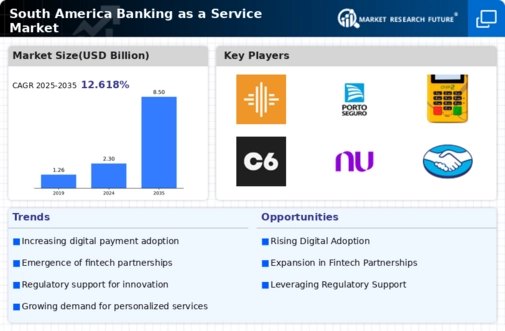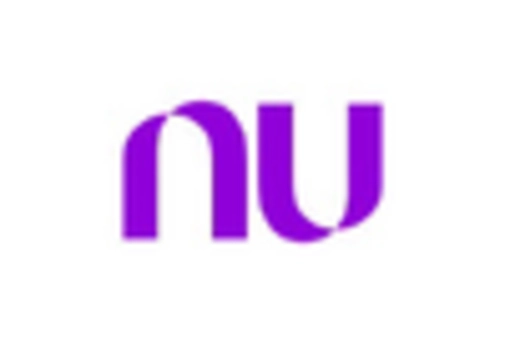The competitive landscape of South America Banking as a Service Market has been evolving rapidly due to increasing digital transformation and consumer expectations for seamless financial services. The region has witnessed a surge in fintech innovations and an influx of traditional banks adapting to the changing paradigms of banking. This shift is driven by a growing desire for efficiency, accessibility, and personalization of financial services among consumers and businesses alike. As a result, various players in this space are competing to establish their foothold while also building strategic partnerships and investing in technology to enhance their offerings.
In this context, understanding the competitive dynamics and the positioning of key market participants is essential for stakeholders looking to capitalize on the growing demand for Banking as a Service solution in South America. Banco Inter has made significant inroads in the South American Banking as a Service Market, distinguishing itself with its innovative digital banking platform and customer-centric offering. The bank operates as a fully digital institution, providing services that span across personal and business accounts, loans, credit cards, and investment options, all designed to be easily accessible through their user-friendly mobile application.
By leveraging technology effectively, Banco Inter not only enhances user experience but also minimizes operational costs, enabling it to offer competitive pricing.
Its strong presence in Brazil allows it to capture a substantial market share in the region, supported by an expanding customer base that favors online banking solutions. Banco Inter's efficient risk management practices and robust technological infrastructure also contribute to its competitive advantages within the South American landscape. Porto Seguro is another key player in the South America Banking as a Service Market, recognized primarily for its diverse portfolio of financial products that include insurance, asset management, and banking services.
The company has established a strong brand presence, particularly in Brazil, where it has been able to develop a loyal customer base through its focus on customer service and product innovation.
Porto Seguro has successfully integrated technology into its offerings, allowing it to provide seamless financial solutions tailored to meet the specific needs of its clients. The company has also pursued strategic mergers and acquisitions to bolster its market position and expand its service capabilities, ensuring a well-rounded range of products that meet the dynamic demands of South American consumers. Its strengths lie in its comprehensive product suite, strong customer loyalty, and proactive approach to leveraging digital advancements, positioning Porto Seguro as a formidable competitor in the region's Banking as a Service ecosystem.


















Leave a Comment